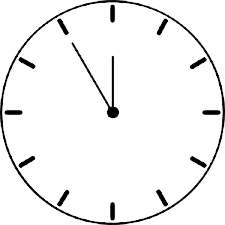Timer Resolution: Adjusted performance optimization; every fraction of a second counts. One often overlooked aspect of system tuning is timer resolution. But can timer resolution indeed be adjusted? Let’s delve into this topic to understand its implications and how it can enhance system efficiency.
This introductory exploration aims to shed light on the significance of timer resolution adjustment, its potential implications, and the methods available for fine-tuning this aspect of system operation. Through this examination, we’ll uncover the underlying mechanisms and considerations involved in manipulating timer resolution to optimize system efficiency and responsiveness.
Table of Contents
Understanding Timer Resolution
Timer resolution refers to the precision with which a system can measure time intervals. It is crucial in various computing tasks, including multimedia playback, gaming, and real-time applications. Essentially, it determines how frequently the system updates its internal clock.
Importance of Timer Resolution in System Performance
High-timer resolution is essential for tasks that require precise timing, such as multimedia playback, where even minor discrepancies can result in audio or video stuttering. Similarly, accurate timing is critical for smooth gameplay and responsiveness in gaming. Moreover, real-time applications, like scientific simulations or financial trading software, rely on precise timing for accurate results.
Can Timer Resolution Be Adjusted
Yes, timer resolution can be adjusted, albeit within certain limitations imposed by the operating system. Windows, for instance, allows users to adjust timer resolution using system APIs. However, it’s crucial to note that changing the timer resolution may affect system stability and power consumption.
Methods for Adjusting Timer Resolution
- Windows Timer Resolution Tool
Windows provides a command-line utility called “Timer Resolution” that allows users to view and adjust the system timer resolution. This tool enables users to set the timer resolution to a specific value, thus improving system performance in tasks requiring precise timing.
- Third-Party Utilities
Several third-party utilities offer more advanced features for adjusting timer resolution. These utilities often provide additional options for fine-tuning timer settings and monitoring system performance.
Impact of Timer Resolution Adjustment on System Efficiency
Adjusting timer resolution can have both positive and negative impacts on system efficiency. Increasing the timer resolution and tasks requiring precise timing may improve performance and responsiveness. However, higher timer resolutions can also lead to increased power consumption and system resource utilization, potentially impacting overall efficiency.
Best Practices for Optimizing Timer Resolution
- Assess Task Requirements
Before adjusting timer resolution, assessing the tasks’ specific requirements is essential. Tasks that demand precise timing, such as gaming or multimedia playback, may benefit from higher timer resolutions, while others may not require adjustment.
- Monitor System Performance
After adjusting timer resolution, closely monitor system performance to evaluate the impact of the changes. Pay attention to responsiveness, power consumption, and stability to ensure the adjustments yield the desired results without compromising system efficiency.
- Use Caution
While adjusting timer resolution can improve system performance, exercising caution and avoiding excessively high timer resolutions is essential. Setting the timer resolution too high can lead to diminishing returns and may introduce stability issues or other unforeseen consequences.
Frequently Asked Questions
Can timer resolution be adjusted on all operating systems?
Timer resolution adjustment is primarily available on Windows operating systems. While some third-party tools may offer similar functionality on other platforms, the built-in APIs for adjusting timer resolution are specific to Windows.
What is the purpose of adjusting timer resolution?
Adjusting timer resolution allows users to fine-tune the timing precision of their system, which can be crucial for tasks requiring accurate timing, such as gaming, multimedia playback, and real-time applications.
How does adjusting timer resolution affect system performance?
Increasing timer resolution can improve the responsiveness and accuracy of tasks that rely on precise timing. However, excessively high timer resolutions may increase power consumption and system resource utilization, potentially impacting overall efficiency.
Are there any risks associated with adjusting timer resolution?
While adjusting timer resolution can offer performance benefits, proceeding cautiously is essential. Setting too high-timer resolution may introduce stability issues or other unintended consequences. Users should monitor system performance closely after making adjustments.
Can adjusting timer resolution improve gaming performance?
Adjusting timer resolution can enhance gaming performance by improving the accuracy of timing-related tasks. This can result in smoother gameplay and reduced input lag, particularly in fast-paced or competitive gaming scenarios.
How can I adjust the timer resolution on Windows?
Users can adjust timer resolution on Windows using system APIs or third-party utilities. The “Timer Resolution” command-line tool Windows provides allows users to view and adapt timer resolution settings.
Conclusion
Timer resolution adjustment is a viable strategy for optimizing system performance in tasks requiring precise timing. Users can leverage this technique to enhance efficiency and responsiveness in various computing scenarios by understanding the implications of timer resolution adjustment and following best practices. However, proceeding cautiously and monitoring system performance is crucial to ensure adjustments yield the desired results without compromising system stability.
Our exploration confirmed that timer resolution can be adjusted, allowing users to fine-tune their computing environments to meet specific task requirements. However, this adjustment includes considerations of system stability, power consumption, and overall efficiency.
